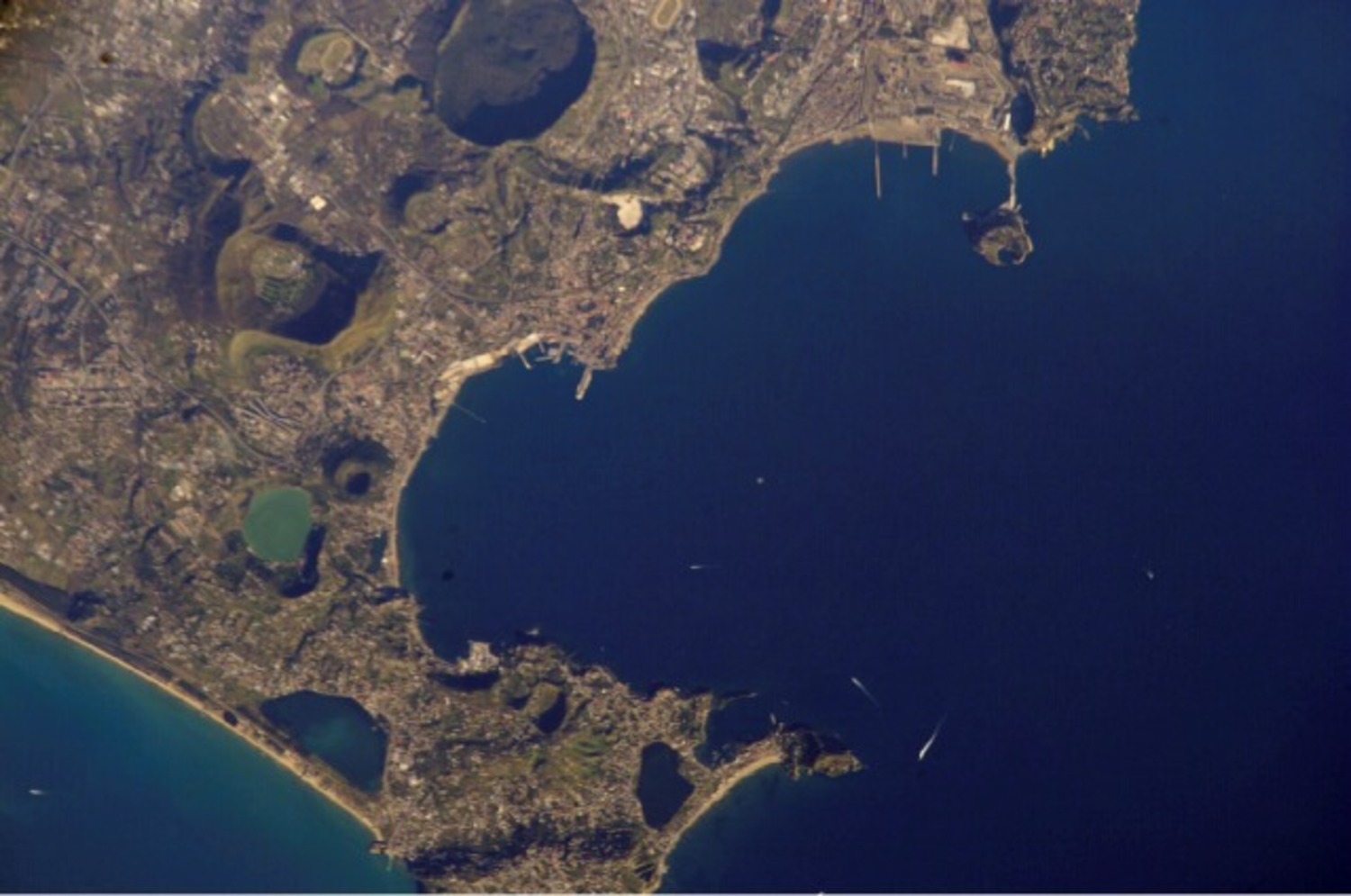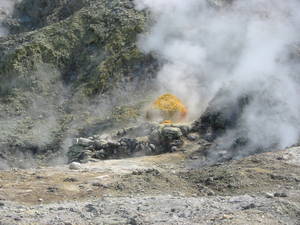Drilling Deep Into a Restless Volcano
Interview with
Kat - We're joined by Dr. Chris Kilburn from University College London. He's doing something that may be only associated with James Bond baddies or Dr. Evil. He is drilling into a volcano. Now I take it Chris, you're not making a secret underground layer, but tell us about this volcano. Where is it? Why is it interesting and why are you drilling into it?
Chris K. - Well of course we're arranging to take over the world with our secret schemes clearly.
Kat - I thought so!
 Chris K. - Campi Flegrei is a caldera. It's a large volcanic complex immediately to the west of Naples in southern Italy. Rather than your typical pointy volcano, it's actually - when you arrive there, it looks like a flat plain which is then dotted with small cones across it's 12 kilometres diameter, and it formed about 15 and a half thousand years ago after a large eruption released several tons of cubic kilometres of magma, and the ground simply sank into the hole that was left behind. Why we're interested in it in particular is because the Campi Flegrei - the west part of Naples is actually inside the caldera and there are another about 250,000 to 300,000 people in the surrounding districts, also living within the caldera itself. And for the past 40 years, it has shown significant signs of unrest, so the central part of the caldera, a town called Pozzuoli or rather a port, today has risen 3 metres with respect to where it was in the late 1960s. And so, this was some concern that this may be one signal that an eruption may be imminent. Imminent - meaning, sometime within perhaps the next 100 years or so.
Chris K. - Campi Flegrei is a caldera. It's a large volcanic complex immediately to the west of Naples in southern Italy. Rather than your typical pointy volcano, it's actually - when you arrive there, it looks like a flat plain which is then dotted with small cones across it's 12 kilometres diameter, and it formed about 15 and a half thousand years ago after a large eruption released several tons of cubic kilometres of magma, and the ground simply sank into the hole that was left behind. Why we're interested in it in particular is because the Campi Flegrei - the west part of Naples is actually inside the caldera and there are another about 250,000 to 300,000 people in the surrounding districts, also living within the caldera itself. And for the past 40 years, it has shown significant signs of unrest, so the central part of the caldera, a town called Pozzuoli or rather a port, today has risen 3 metres with respect to where it was in the late 1960s. And so, this was some concern that this may be one signal that an eruption may be imminent. Imminent - meaning, sometime within perhaps the next 100 years or so.
Kat - Crumbs! So, you're drilling into a volcano to find out more about it. Tell us a bit about how you go about drilling into a volcano and then the sort of things that you're looking for once you've done your drilling.
Chris K. - Well the type of drilling is fairly similar, the technology is very similar, to that used for drilling for oil. Of course, that's not the best analogy used right now, but nevertheless, what we're particularly interested in is obtaining material down to depths of about 4 kilometres. The reason for that is because all the data that we have so far suggests that the unrest is being driven by changes somewhere at depths up to 4 kilometres below the surface, and we need samples to do experiments on to better understand the physical properties of the rocks, so that we have a better understanding of how it's likely to break as the whole crust continues to deform.
Kat - And what sort of changes are you looking for? What can you tell about a volcano? What it's up to from looking at these samples?
Chris K. - Well the samples themselves really - what we're going to look at are for example, the conditions, the stresses that have to be applied for them to break, how cracked they already are, whether it's possible for water to easily pass through the rocks, and all this information is needed to interpret seismic signals that we record normally at the surface, and also, to interpret for example, changes in the ground deformation, changes in gravity signals - as we'll discuss later. At the moment, we have to make best guesses for some key parameters and hopefully, thanks to the drilling, we will be able to be much more precise about the numbers that we stick into the models.
Kat - And the one thing that concerns me slightly is that you're drilling into a volcano. Is it safe? Is there any risk that you're going to sort of - wake it up or something?
 Chris K. - No. We don't think so. Not in this particular case. All the evidence points to the fact that there isn't any significant molten magma right now at shallow depths. What's happened is that if magma has been evolved, it's been small bodies of material that have pushed up to shallow levels and have now solidified. In any case, the diameter of the borehole is only a few 10's of centimetres across and it's extremely unlikely that magma will be able to force its way up from 4 kilometres up to the surface, even if we happen by mistake to actually meet some molten material, but that's really unlikely.
Chris K. - No. We don't think so. Not in this particular case. All the evidence points to the fact that there isn't any significant molten magma right now at shallow depths. What's happened is that if magma has been evolved, it's been small bodies of material that have pushed up to shallow levels and have now solidified. In any case, the diameter of the borehole is only a few 10's of centimetres across and it's extremely unlikely that magma will be able to force its way up from 4 kilometres up to the surface, even if we happen by mistake to actually meet some molten material, but that's really unlikely.
Kat - One of the things that we know in volcanic areas is that you can harness the heat from the volcanoes and you use things like geothermal energy to heat up water. Is that something that you're looking at that you could apply to the Campi Flegrei?
Chris K. - We will take advantage of that, having drilled a borehole here that has more purely scientific and hazard related motives. But you're quite right, once the whole has been made, it will be possible to look at the potential of hot water to percolate through the rock and extract it so the heat can be extracted from the water, and then it can be used for energy purposes. In the early 1980s, this was tried once before but the price of oil was so cheap in those days that it really wasn't economic to develop as a geothermal field. Of course, the economic conditions today are quite different. So, it may turn out that this particular borehole will also be used to evaluate whether it's worth developing the area as a geothermal resource.
Kat - How times have changed. It could be handy. And finally, how similar is the Campi Flegrei to other volcanoes around the world? Can you apply what you're finding out to other volcanoes and make predictions about them as well?
Chris K. - Well, there are several hundred caldera complexes across the world and somewhere of the order of 130 to 150 have been restless in the last 300 or 400 years. So, we certainly expect that we will be able to take some of our results and apply them more generally across the world. Other examples include Long Valley caldera in California, maybe Yellowstone, also in the United States, and Papua New Guinea, the Rabaul caldera, so to name just two or three.
Kat - And not scoping any of them out for a secret underground layer.
Chris K. - But I couldn't possibly tell you that on air, could I?










Comments
Add a comment